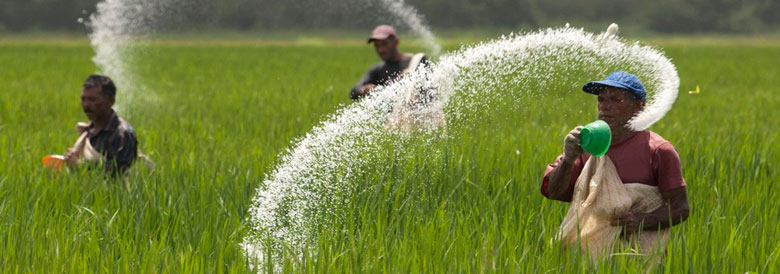Urea and Ammonia prices unchanged this week but seems not stable, maybe.
The maximum retail price (MRP) of urea and ammonia has remained unchanged, however on Wednesday, the Union Cabinet approved the “continuation of the urea subsidy scheme” with a view to ensure supply of the fertilizer “at the same price”.

The fact is that urea sales in India, the second largest consumer of Urea after China, crossed a record 35.7 million tonnes (mt) during 2022-23, as against 30.6 mt in 2021-22. The current Indian government’s initiatives such as compulsory neem coating, reducing the bag size from 50 kg to 45 kg, and launch of the so-called Nano Urea haven’t helped bring down the consumption of this fertilizer containing 46 per cent nitrogen (N).
The reason is simple: When urea retails at a fifth or even less than that of most other fertilizers, why should farmers cut back on its use? It’s another thing that the disproportionate application of N has, over time, resulted in diminishing crop yield response. Studies have shown that 1 kg of N, P (phosphorus) and K (potassium) used to yield 12 kg-plus of cereal grains during the 1960s, but only 5 kg now.
In Pakistan the demand is even higher and so the prices are, as we witnessed in the latest large Tender in Pakistan.
The tender was opened on Monday and some five international suppliers submitted offers for the supply of urea. A bidder, namely Syed Allauddin & Company, regretted. Lowest bid of $389.9 per metric ton was submitted by ABG Trading and it was agreed to supply 100,000 metric tons of urea. West Trade International offered to supply 50,000 metric tons of urea at $ 394.49 per metric ton at Karachi and $ 404.90 per metric ton for Gwadar. Another bid was received from Key Trade for supply of 100,000 metric ton urea at $405.50 per metric ton.
Agri Commodities offered to supply 200,000 metric tons urea at $414 per metric ton and SAMSUNG quoted $419 per metric ton for Karachi and $ 420 per metric ton for Gwadar port for supply of 50,000 metric tons.
